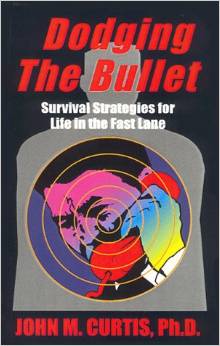LOS ANGELES.–Supreme Court ruled today against anti-abortion groups that wanted the abortion pill mifepristone banned, saying that the court did not have standing in ruling against an FDA-approved medication. Plantiffs for the anti-abortion group Alliance for Hippocratic Medicine argued that the 2000-approved drug mifepristone violated the Supreme Court’s June 24, 2022 overruling of 1973 Roe v. Wade giving women the right to abortion at anyplace, at anytime in the United States. Writing for the majority, 59-year-old Associate Justice Brett Kavanaugh delivered the majority opinion. “Under Article III [the judiciary] of the Constitution, a plainfiff’s desire to make a drug less available for others does not establish standing to sue. Nor do the plaintiffs’ other standing theories suffice,” Kavanaugh wrote. “Federal courts are the wrong forum for addressing the plaintiff’s concerns about FDA’s actions.”
Kavanaugh makes no mention whether he agreed in principle with 2022 Dobbs v. Jackson that overturned Roe v. Wade, that the Constitution has no guarantee of abortion to U.S. citizens. Alliance for Hiiporatic Medine argued that with Roe v. Wade overturned, the government could not approve a federal or FDA medication that accomplished the same goal of abortion. Since the end of Roe v. Wade, 12 states implemented outright abortion bans and others implemented time restrictions, sometime limiting abortion to only the first trimester. Whatever the reasons, Kavanaugh ended the case on a technicality, saying plaintiffs had no standing in the federal courts because mifepristone, AKA the abortion pill, was approved and regulated by the FDA not the federal courts. Some pro-abortion groups expressed relief over the Supreme Court’s ruling on the abortion pill.
Pro-life groups work 24/7 since 1973 Roe v. Wade to overturn the federal government’s approval of abortion, eventually getting their way with 2022 Dobbs v. Jackson. Supreme Court ruled that there was no Constitutional guarantee to abortion, despite 1973 Roe v. Wade that essentially let women and their doctors decide what’s best for their patients. In another pending cases before the Supreme Court, Moyle v. United States, the court will decide whether rules related to care in emergency rooms gives doctors the right to perform an abortion in the course of their normal emergency room duties. Like with the abortion pill case, the court could easily say plaintiffs have no standing to interfere with the practice of emergency medicine, something also regulated by the 1986 Emergency Medical Treatment and Labor Act [EMTALA], something under the Article 11, a Congressional Act.
Anti-abortion groups have every conceivable legal angle for banning abortion to protect the unborn child, essentially defined from the point of conception. Supreme Court is also likely to tell plainfiffs in Moyle v. United States, that they don’t have standing in the federal courts for a Congressional Act under Article II authority. “We are relieved by the outcome, but we are not celebrating,” said Destiny Lopez, acting co-CEO of Guttmacher Institute. “In the face of relentless attacks, policy makers at all levels need to keep pushing forward expansive and protective policies that ensure everyone can access abortion care using the method that best suits their needs,” said Lopez, relieved at the Supreme Court’s ruling on mifepristone. Lopez and other pro-choice advocates want Congress to pass national legislation that supersedes the states to allow for abortion like Roe v. Wade.
Pro-life groups weren’t happy with the Supreme Court’s refusal to step into the FDA’s lane to ban mifepristone. “It is a sad day for all who value women’s health and unborn children’s lives, but the fight to stop dangerous mail-order abortion drugs is not over,” said Kate Daniel, state policy director for SBA Pro-Life America. Daniel clearly oversteps her boundaries by characterizing mifepristone as a dangerous drug when it’s been used for nearly 25 years without significant adverse consequences. Calling the Supreme Court’s ruling “’disappointing but not surprising’ and also expressed concern for the ‘conscience rights of pro-life doctors.” “Mifepristone blocks the hormone progesterone and primes the uterus to respond to the contraction-causing effect of a second drug, misoprostol,” something beyond the scope of the federal courts.
Whatever the benefits or liabilities of mifepristone, it’s not appropriate for the Supreme Court to rule on an FDA-approved drug, whether it prevents pregnancy or causes abortion. Pro-life groups make every argument under the sun why the abortion pill should be removed from the market, often calling it dangerous without any knowledge or expertise in the FDA’s drug approval process. When the Supreme Court overruled Roe v. Wade June 24, 2020, it opened up a can of worms, reopening the old fight for abortion rights, but, more importantly, a women’s right to medical decision making. Kavanaugh got today’s ruling about mifepristone right today but the Supreme Court got Roe v. Wade ruling wrong. Ending Roe v. Wade wastes the Supreme Court’s time-and-effort on once established precedent or settled law, not bogged down in endless abortion-related cases.
About the Author
John M. Curtis writes politically neutral commentary analyzing spin in national and global news. He’s editor of OnlineColumnist.com and author of Dodging The Bullet and Operation Charisma.



